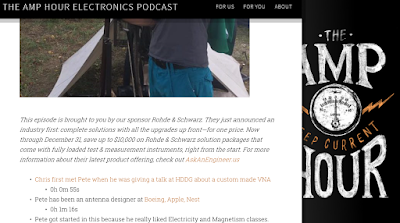It really made me envious. I was holidaying in a subtropical city walking through a park. I came across some stands of bamboo. Really tall.
I wanted to break off a few pieces and carry them home. The only problem is I'd have to carry them over 1000km. The airline would have something to say if I tried to take them as oversized luggage. That would only be the start of it as no car, taxi, train or bus home could accommodate them.
So if you live in an area where bamboo is common count your lucky stars. It can be super versatile for antennas. Sure, it might not be the longest lasting material or have the best RF properties but it's light and cheap. Many an island DXpedition has succeeded because its operators lashed together a bamboo and wire beam that, together with the excellent location, can provide world-beating signals.
So what might you use bamboo for? The most obvious is some sort of antenna mast. You're not going to support a heavy metal beam and rotator with one or even a few lengths. But it would be fine for wire antennas, such as fixed direction wire yagis or quads. Or if you wanted to make the latter rotatable it could form quad spreaders.
Verticals and ground planes is another use, with the bamboo forming a guide for the wire. Although for the latter it's probably better to not have too much of the wire running right along the bamboo, especially at high voltage points. Using the bamboo as a former for some sort of helical element or loading coil also sounds a bit chancy for me.
Have you tried bamboo supported antennas? Or ones where wire elements were held in place with bamboo? Please share your experiences below.
PS: Want to read more about antennas? Consider this selection of antenna books. They are affiliate links meaning that I receive a small commission (at no extra cost to you) if you decide to purchase.








